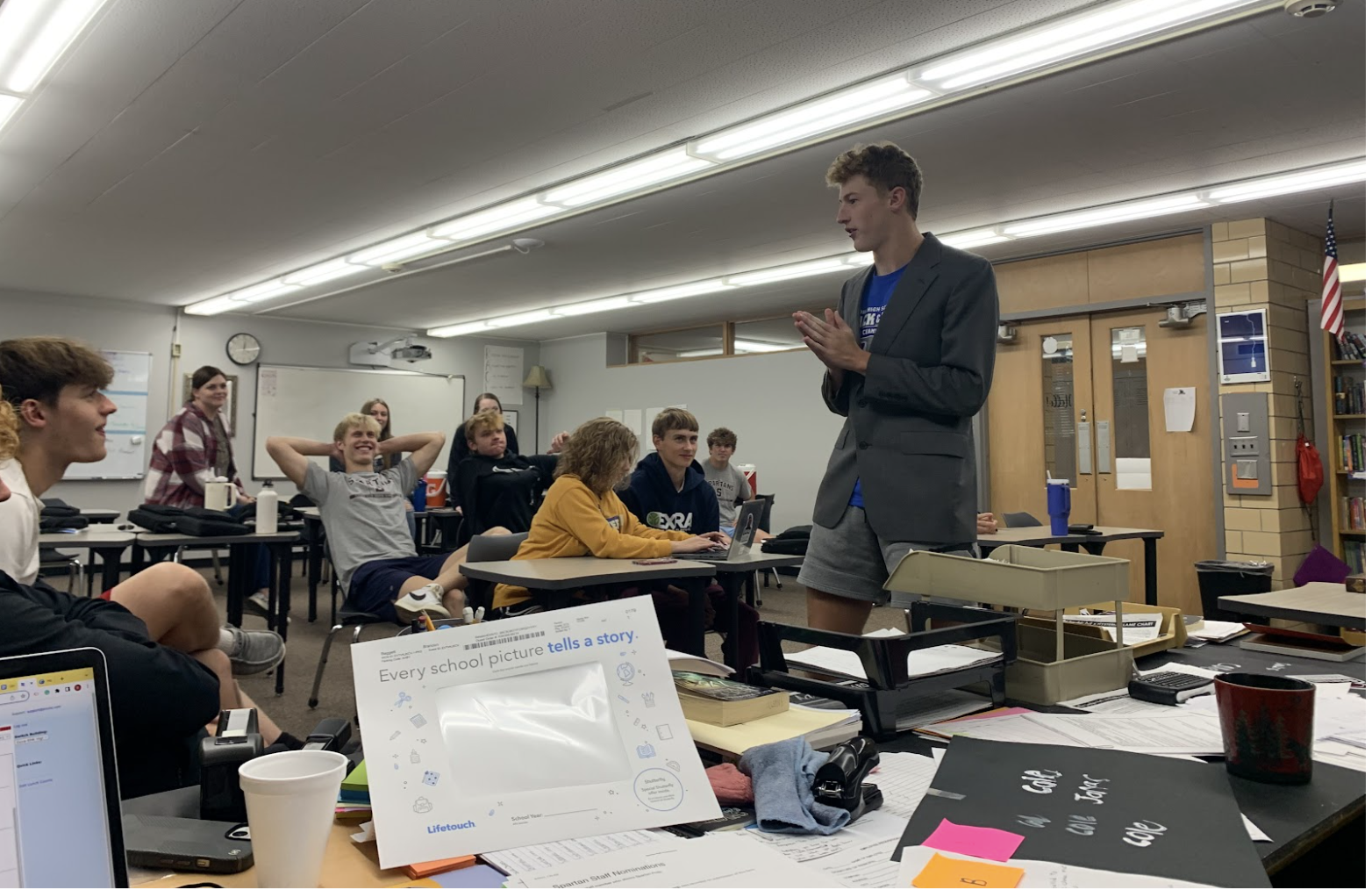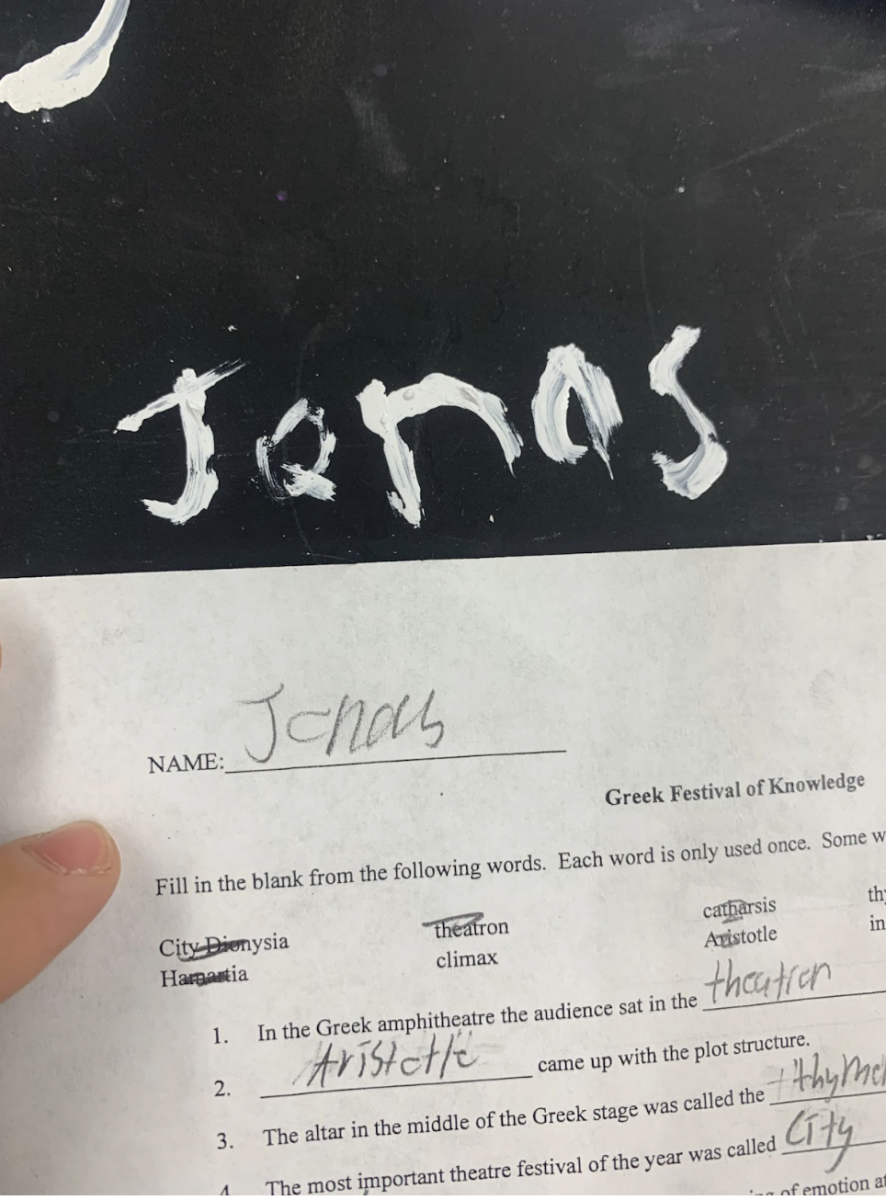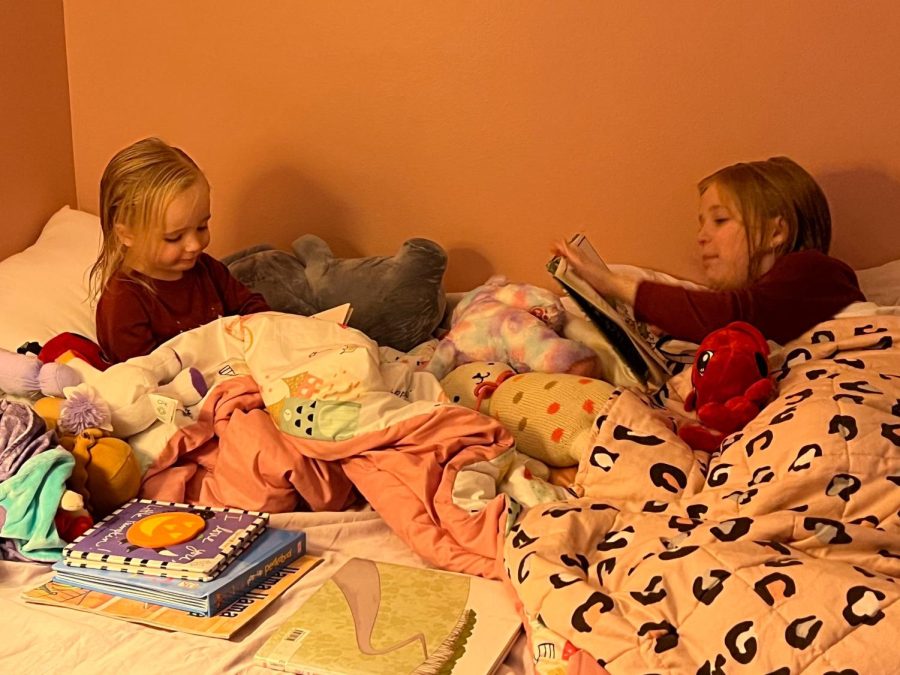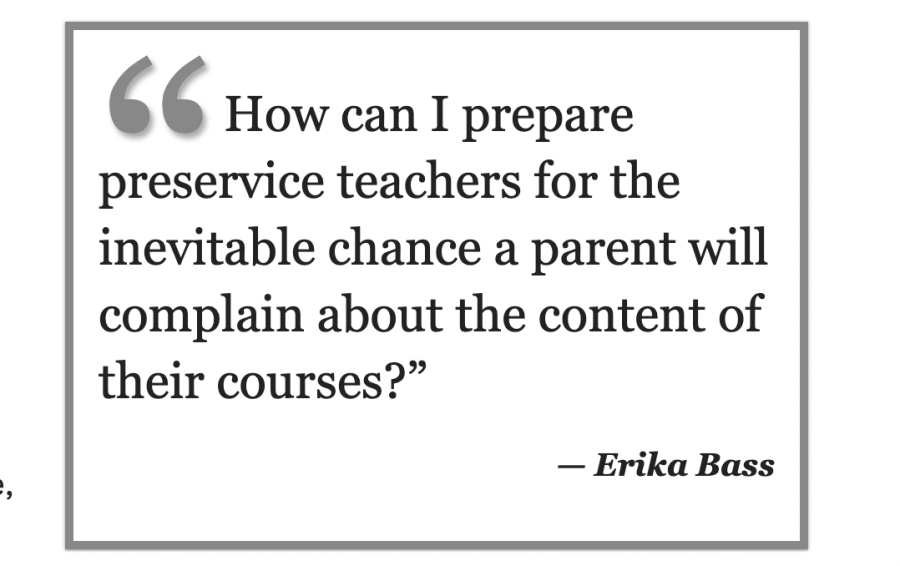While attending our Fall ICTE conference, my classroom was managed by a well-qualified substitute teacher. Aside from a short phone call on my way to the conference on Thursday, everything was going swimmingly, or so I thought.
Monday Morning:
I returned to school with the now familiar revitalized vigor of post-conference Monday. Everything seems in order, including the many uncompleted assignments that usually accompany any absences I take from school.
I begin to organize my desktop area, a roughly four-foot by twelve-foot Frankenstein-ish creation consisting of a standard teacher desk, two student desks, and a table. Then I notice something out of place among my organized chaos. Someone has vandalized my black chalk-painted table with Wite-Out! Not just someone but two some-ones. Their names were quite legible: Jonas and Cole. They are two seniors in my Drama class.
Immediately upon discovery of the desecration, I recovered the note I left the substitute. Scanning down my schedule, “OK”; “Skylar and Kyle Absent”; “All OK”; “Good”; finally Drama class: “OK but someone wrote on your desk with Wite-Out, not sure who it was.”
Fresh off the ICTE conference of enlightenment, I wondered if I could use this situation as an opportunity to teach.
I’m perplexed, the names are written clearly on the table. I need to get to the bottom of this serious offense, but how? An investigation? Do I get admin involved? Fresh off the ICTE conference of enlightenment, I wondered if I could use this situation as an opportunity to teach.
——-
Riiiiiing time for 7th period Drama Class.
Students file in and ask about their grades from a test I had the sub administer on Friday.
“We have a more pressing issue at hand. A crime has been committed in this very room”
This started one of the greatest moments of teaching drama in my career.
First, I told the class to set the room up for a trial. With glee in their eyes, they eagerly moved desks and chairs into position. The courtroom included defense and prosecution tables, jury chairs, the witness stand, the judge’s bench, as well as seats behind the defense table for the defendants: Jonas and Cole. No question.
Next, I directed a student to the whiteboard to start writing a list of tasks to be completed before the trial began.
- Defendants identified – Easy… Jonas and Cole
- Determine the defense team and prosecution teams
- Assign a bailiff, judge, and jury members
- Gather evidence
- Start the trial
The buzz was something to behold. A prosecution team was formed almost immediately and they took it upon themselves to snag two suit coats I had hanging behind my deck. I’m simply watching and soaking in the moment. Meanwhile, the newly appointed bailiff removed the defendants from the classroom-turned-courtroom. The judge took his place at the bench and the jury began to settle into the chairs at the left.
Little did they know, I didn’t actually care about the table and had even contemplated removing it; it is terribly ugly.
I think it was at this moment that the accused believed they were in some serious trouble. Probably because I kept a no-nonsense court-like tone during the setup. Little did they know, I didn’t actually care about the table and had even contemplated removing it; it is terribly ugly. Maybe I’ll allow seniors to sign the table at the end of the year.
———
The defense team has been decided and now it is time to gather evidence. I announce that both sides have 10 minutes to gather relevant evidence needed for the trial. The classroom turns into a madhouse of excitement and learning. I coasted about and offered advice on evidence options by prompting questions like, “What types of evidence are used in a trial case?”
“Witnesses!”
“Expert testimony!”
“The weapon!”–in this case the Wite-Out.
“Photos of the crime.”
——–
As students began gathering all types of evidence, I advised them to make a witness list, and label evidence as Exhibit “A,” “B,” etc.
“We need a Bible,” the judge suggests. “You know, to swear in the witnesses.”
“Ah, you are right, but we don’t have a Bible,” I reply.
“What about this?” he asks, holding up my collector’s-edition, leather-bound, gold-edged copy of Huckleberry Finn.
“Perfect” I smiled.
———
Emailed photos of critical evidence began to flood my inbox as well as requests for copies of the student handbook section on “Vandalism.” In one corner, teams of “lawyers” are taking statements from witnesses. Outside, one of the defense team members is interviewing the defendants. I am nearly bursting with joy and excitement.
Time’s up! Let the trial begin.
———
Everyone is in their places, defendants Cole and Jonas enter the courtroom one at a time through the double doors of my classroom, escorted in a handcuff pantomime by the bailiff. They are seated behind the defense table. The bailiff waits by the door for a moment, then: “All rise for the Honorable Judge Hansen.”
I rise, we all rise, and I look out to see genuine excitement and engagement on the faces of students, brightly colored sticky notes on labeled evidence, the judge’s gavel, and the copy of Huck Finn.
I rise, we all rise, and I look out to see genuine excitement and engagement on the faces of students, brightly colored sticky notes on labeled evidence, the judge’s gavel, and the copy of Huck Finn.
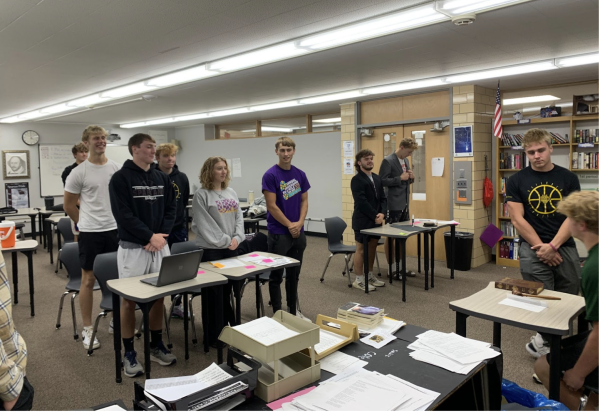
We start with opening statements and the students do not disappoint. They are addressing the jury with sincerity and real energy. They have embodied the characters. They are lawyers, defendants, jury members, witnesses, a judge, and a bailiff.
After opening statements, the first witness is called: “We call Mr. Bradley* to the stand.”
Cole is reminded of his 5th Amendment rights and is then sworn in on Mark Twain.
Cole is reminded of his 5th Amendment rights and is then sworn in on Mark Twain.
From handwriting comparisons to eyewitness testimony, evidence is submitted, pictures are produced and solid arguments develop on both sides. I am called to testify as a handwriting expert. I compare the handwritten drama test from the previous Friday to the vandalism on the table. I note the similarities in the structure of individual letters.
This is reinforced when the prosecution produces a sheet of black construction paper and asks the defendant to write his name in Wite-Out. “In my professional opinion, I am certain that Mr. Bradley’s writing on the construction paper is a nearly identical match to the writing on the table,” I respond.
The defense counters on cross-examination with solid questions like, “Mr. Bradley, is your first name hard to spell?”
“No, M’am. One of the letters is just a line.”
“Right, so one could say that anyone in this room is capable of writing your name?”
“Yes, that sounds accurate.”
——-
Questions continue and Mr. Bradley claims he was out of the room during the time of the crime, waiting to play “The Boss Game.” Questions about the whereabouts of the sub arise and go unanswered. Cole is released from the stand and Jonas is called forward. Again, he is reminded of his rights and swears on Mark Twain.
“Mr. LaRose, did you write on the desk in Wite-Out?”
“Absolutely not”
A similar line of questions ensues with more handwriting comparisons.
I again provide my expert opinion on the comparisons. The prosecution asks about his location during the time of the crime and he states that he was in the circle playing ZIP, ZAP, ZOP. This leads to the prosecution positioning him in the area where we usually play the game and having him reach toward the table. It is worth noting that Jonas is a very tall basketball player with a huge wingspan. You can guess that he could easily reach the table from the location of ZIP, ZAP, ZOP.
“The State rests”
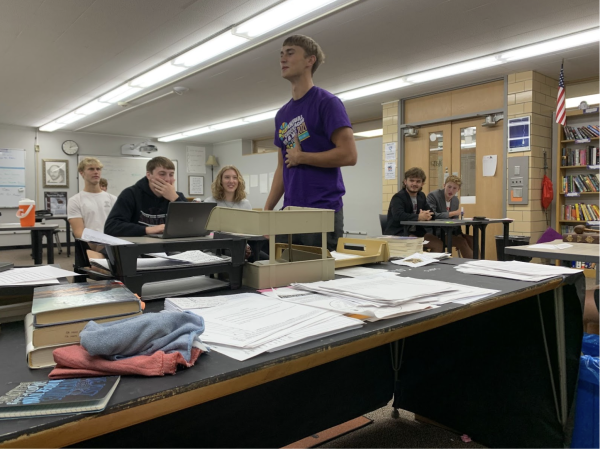
The defense took a different route this time. They begin a line of questioning related to left-handedness and artistic ability. Jonas is artistic and has an A in art according to self testimony. His skill with a brush is much better than what is displayed on the table. Per the defense, I am asked to verify the grade and it is indeed an A.
Upon prosecution cross-exam, we learn that the art class Jonas is in is actually pottery and sculpture, having nothing to do with handwriting.
Upon prosecution cross-exam, we learn that the art class Jonas is in is actually pottery and sculpture, having nothing to do with handwriting.
Defense counters with the point that you still must write your name on the sculpture.
Two other witnesses are called forward, one claiming Cole stated, “I’m f***ed” at lunch after I advised their table (I was on lunch duty) that I would be addressing the vandalism in class. Defense objected but the judge found the evidence credible and allowed its admission.
The other witness claimed he actually saw the defendant, Mr. Bradley, with the Wite-Out bottle sitting at the table. This sends a wave of murmurs through the courtroom.
The defense offered additional evidence, including the note the substitute teacher left that stated, “Someone wrote on your desk in Wite-Out but I don’t know who.”
The whispers from the jury tell me they are split on the guilt of Jonas but are in agreement on Cole.
We go into recess until the next day
———
We finished with the final witness and closing arguments with the principal and school resource officer in attendance. They are aware that no real damage has been done.
The closing statements are succinct, persuasive, and professional. They remind me of a real courthouse drama. It was graveyard silent except for the one delivering the final words for their side.
Now it’s in the hands of the jury.
——–
The Jury deliberates in a side room (the teacher’s lounge) for a few minutes, hashing over the details of the case. “But he confessed at lunch!” “No one saw Jonas do it!” “What about the handwriting, it was a near match.” “What about the Sub?”
They have come to a decision. A knock at the door. A whisper between the bailiff and the shadow behind the door.
Bailiff: “All Rise” (the room is on their feet, it is deathly quiet)
(The jury files in and sits) “You may be seated” (all sit)
Judge: “Mr. Foreman, has the jury reached a verdict regarding the case against Mr. Bradley?
Foreman: “Yes, your honor.”
Judge: “Will Mr. Bradley and the defense please rise.” (Mr. Bradley and the defense team rise. Bailiff stands behind Mr. Bradley) “On the charge of vandalism, how does the jury find the defendant?”
Forman: “We find the defendant, Guilty” (bailiff grips Mr. Bradley)
Judge: “This court finds Mr. Bradley guilty and sentences him to no less than 30 min of resurfacing the table and a public apology to be delivered at lunch. Bailiff, please escort Mr. Bradley from the courtroom.”
Judge: “Mr foreman, has the jury reached a verdict regarding the case against Mr. LaRose?”
Foreman: “Yes, your honor.”
Judge: “Will Mr. LaRose and the defense please rise” (Mr. LaRose and the defense team rise. Bailiff stands behind Mr. LaRose) “On the charge of vandalism how does the jury find the defendant?”
Forman: “We find the defendant, (pause) Not Guilty” (bailiff steps away from Mr. LaRose)
A sigh of relief washes over Jonas’s face and he embraces his defense team.
In the end, this was an excellent opportunity for the students that had fun and excitement for all involved. Students learned more about embracing a specific role in theatrical performances, basic courtroom procedures, and typical debate techniques. After this experience, I have decided to create an actual mock trial unit and teach it next semester in Advanced Drama.
*Last names have been changed for a degree of student privacy. But hey, Jonas and Cole are indelible.

